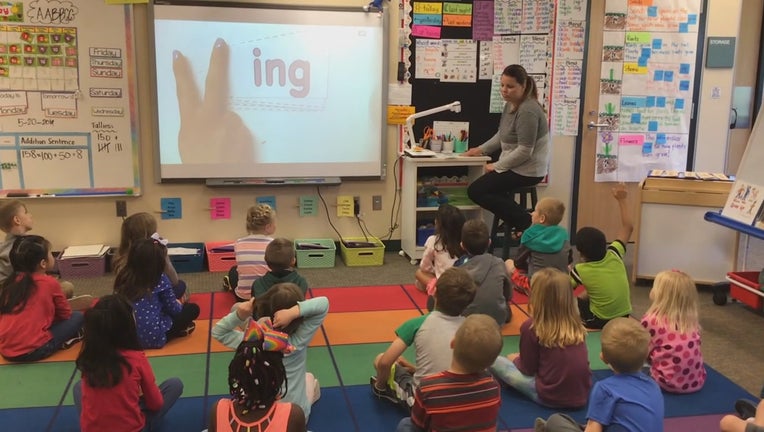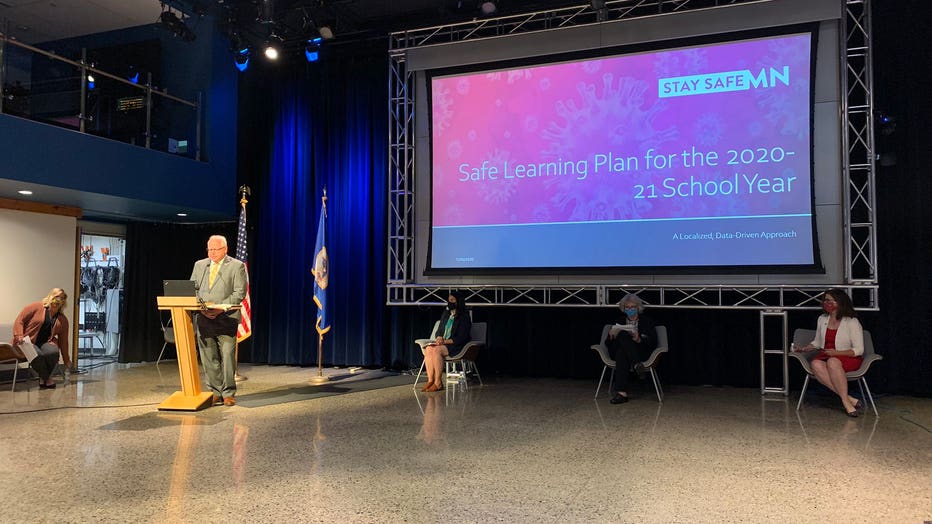Minnesota Governor announces localized return-to-school plan with option for families to keep students home

Kaitlin Wermerskirchen, a kindergarten teacher at Jackson Elementary School in Shakopee is a FOX 9 Top Teacher. She and other Minnesota educators are curious to see if they will return to classrooms full time, part-time or not at all this fall. (Kaitlin Wermerskirchen)
ST. PAUL, Minn. (FOX 9) - Gov. Tim Walz announced school districts will be able to reopen this fall in-person, with distance learning or a hybrid of the two based on COVID-19 data in the counties of each school district statewide.
The new plan also gives each Minnesota family the option to keep their children learning from a distance if they are not comfortable or able to send their child back to school in-person this fall.

Minnesota Governor announces localized return-to-school plan with option for families to keep students home
Gov. Tim Walz announced school districts will be able to reopen this fall in-person, with distance learning or a hybrid of the two based on COVID-19 data in the counties of each school district statewide.
According to Walz’s office, Department of Health and Education experts will work with each school district and charter school to help determine which model they will use. The criteria will be the level of viral activity in the surrounding area and the district’s ability to meet mitigation requirements.
Each school district will announce their own plan before classes begin this fall.

Gov. Tim Walz announces the 2020-21 safe learning plan.
Each district's return-to-school method will be determined, in part, by the following parameters:
- 0-9 cases per 10,000 over 14 days by county of residence - In-person learning for all students
- 10-19 cases - In-person learning for elementary students; hybrid learning for secondary students
- 20-29 cases - Hybrid learning for all students
- 30-49 cases - Hybrid learning for elementary students; distance learning for secondary students
- 50+ cases - Distance learning for all students
The state will continue to consult with schools and districts throughout the school year to let them know if they should change their schooling format.
Education Commissioner Mary Cathryn Ricker said, “This localized approach that is centered on the data and informed by a school’s ability to follow all the public health requirements, will help school districts and charter schools navigate this uncertain school year.”

Parents, teachers eagerly await state’s return-to-school plan announcement
Thursday, Gov. Tim Walz will announce what public education will look like across the state this fall.
Overall, the plan prioritizes keeping younger children in the classroom because transmission is much less likely for them and in-person learning is more important for their development.
In addition to giving families the choice to keep students home, the Governor’s office is requiring school districts to allow teachers and school employees to work remotely to the extent that it’s possible.
In a release, Lt. Gov. Peggy Flanagan said, “the Safe Learning Plan sets the guidelines for how safely a school can reopen, based on regional data and the expertise of public health leaders and local administrators, while still allowing families, teachers, and staff to make the decision to stay home.”
The Governor’s office said it is investing more than $430 million in federal funding to help with this transition, including $180 million to improve distance learning capabilities and $250 million that will help provide face coverings for every student, educator and staff member, institute a testing plan, cover operational costs and boost student, family and educator support like trainings, tutoring, translation services and mental health support.
On the eve of the announcement, some teachers expressed their anxiety about the announcement.

